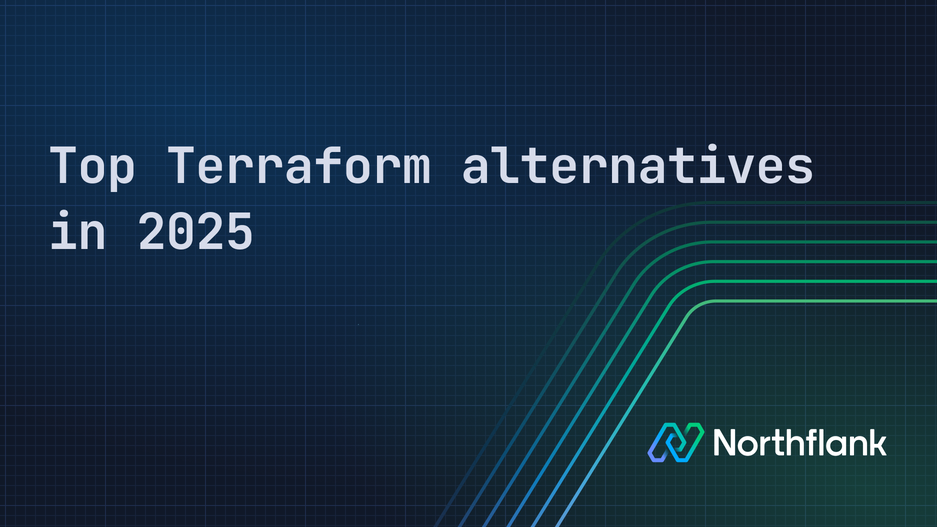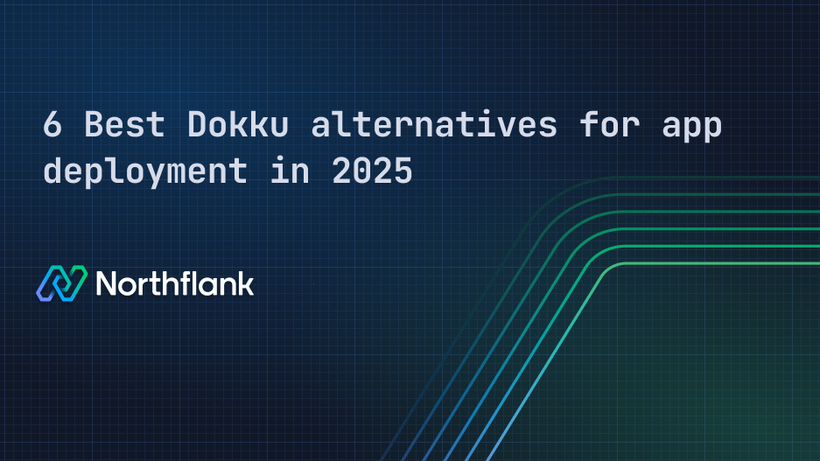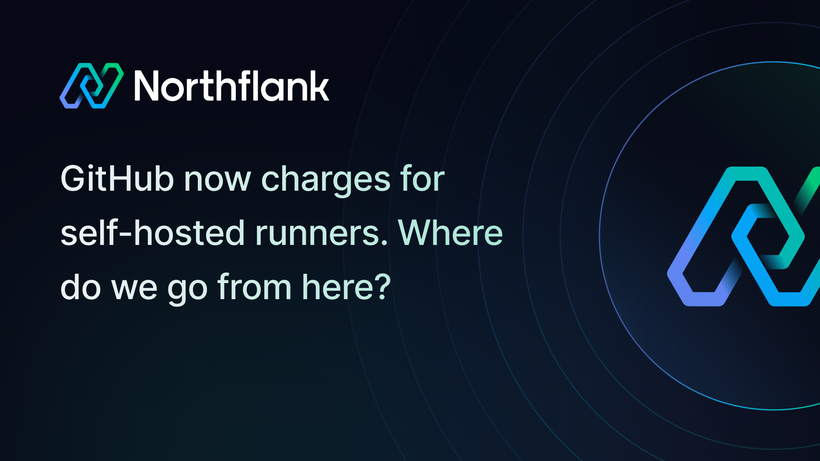

Top 10 Terraform alternatives to optimize your infrastructure in 2025
If you’ve worked in DevOps or platform engineering recently, you’ve probably used Terraform. It’s been one of the most popular tools for managing infrastructure as code.
But things are changing.
More teams are starting to ask: “Is Terraform still the best choice?”
Why? Well, it’s not just about writing code anymore. Today’s cloud infrastructure is more complex. And Terraform, while powerful, comes with some real headaches like confusing state files, harder learning curves, and recent license changes that some people aren’t happy with.
At the same time, new tools have come out. They’re easier to use, faster to set up, and built for modern cloud-native environments.
If you’re feeling stuck with Terraform or just curious about other options, this guide is for you.
Just want the list? Here are 10 standout Terraform alternatives, each solving IaC in their own way:
- Northflank – A full-service platform built on Kubernetes that simplifies deployments, CI/CD, databases, and infrastructure, all without the hassle.
- Pulumi – Write IaC using real programming languages like TypeScript or Python.
- Crossplane – Kubernetes-native IaC that plays great with GitOps and platform engineering.
- Spacelift – Adds control, policy, and workflows on top of Terraform.
- env0 – Makes Terraform more collaborative with cost controls and governance.
- AWS CDK – Ideal if your whole world lives in AWS.
- Bicep – Azure’s clean, modern IaC syntax.
- Google Config Connector – Kubernetes-native GCP resource management.
- Ansible – A classic automation tool that still pulls its weight.
- Terragrunt – A smarter wrapper around Terraform to reduce repetition and improve reuse.
Let’s be clear: Terraform has earned its place. It pioneered the modern IaC movement, brought consistency across cloud providers, and has helped thousands of teams tame infrastructure chaos.
But over time, cracks have started to show:
- State management is fragile. One wrong move, and your state file turns into a single point of failure.
- CI/CD isn't native. You’ll often find yourself duct-taping scripts and pipelines together.
- HCL (HashiCorp Configuration Language) can be awkward. While readable, Terraform’s syntax is not always intuitive, especially for teams coming from app development.
- Licensing is a curveball. HashiCorp’s move to the BSL license spooked a lot of open-source fans and raised long-term concerns.
- Scaling gets tricky. As your infrastructure grows, so does the complexity of managing dependencies, modules, and long plan times.
For many teams, what started as a time-saver now feels like technical debt.
Not every team needs the same thing from their infrastructure tooling. Before diving into the options, take a moment to think about your priorities:
- Declarative vs imperative: Do you want to describe the end state (like Terraform)? Or do you need step-by-step control?
- Cloud-native readiness: Will it play nice with containers, Kubernetes, and serverless?
- Collaboration features: Can your team safely work in parallel? Are there roles, approvals, and audit trails?
- State handling: Is state transparent and reliable—or better yet, abstracted away?
- CI/CD integration: Does it plug into your workflow easily? Or will you be writing glue scripts?
- Licensing and cost: Post-BSL, sustainability and openness matter more than ever.
- Learning curve: Can new team members ramp up quickly?
Now, let’s talk about what’s out there.
Here’s a curated list of Terraform alternatives gaining traction in 2025, each offering a unique spin on IaC:
Imagine deploying a full-stack application, complete with a database, DNS, and automated CI/CD in minutes, without touching a single YAML file or worrying about Terraform state files. That’s the experience Northflank is aiming to deliver.
Northflank isn’t just an alternative to Terraform; it’s a leap forward for teams that want to ship faster and spend less time wrangling infrastructure. Designed with a developer-first mindset, it wraps deployment, provisioning, and operations into one sleek platform. Whether you’re spinning up microservices, deploying containers, or managing databases, everything just works without the usual friction.
Learn more about Infrastructure as code on Northflank here

Key features:
- Built-in CI/CD pipelines for streamlined deployments
- First-class support for containers, databases, and DNS out of the box
- A powerful API and intuitive UI that developers actually enjoy using
- No YAML, no Terraform state files, no provisioning headaches
- Fully managed infrastructure, so your team can focus on code, not cloud complexity
- Built-in monitoring and logging
- Automatic horizontal scaling
- Integrated secrets management
- Bring your own cloud (BYOC)
Best for:
Teams who want to deliver software quickly and reliably without becoming infrastructure experts. If your team is tired of juggling Terraform, CI/CD tools, and cloud resources separately, Northflank brings everything together in one platform, freeing you to build, ship, and scale with ease.
Pulumi is an infrastructure as code platform that lets you define cloud infrastructure using familiar programming languages like TypeScript, Python, Go, and C#.

Key features:
- Multi-cloud support (AWS, Azure, GCP, Kubernetes, and more)
- Strong integration with CI/CD tools
- Use code you already know
- Supports both imperative and declarative styles
Best for: Developers who prefer full control and flexibility using general-purpose code instead of domain-specific languages like HCL.
Crossplane is a Kubernetes-native IaC framework that lets you manage infrastructure using custom Kubernetes resources (CRDs).

Key Features:
- Kubernetes-native infrastructure management
- Supports GitOps workflows
- Works well for building internal developer platforms
- Strong community and open-source support
Best For: Teams that are all-in on Kubernetes and want a unified control plane for apps and infra.
CloudFormation is AWS’s native IaC service, and the CDK is a developer-friendly abstraction that lets you write infrastructure in real code.

Key features:
- CDK lets you write infrastructure in TypeScript, Python, Java, and C#
- Tight integration with AWS services
- Fully supported and maintained by AWS
- CDK generates CloudFormation templates behind the scenes
Best for: Organizations fully invested in AWS that want first-party tooling and familiar languages.
Bicep is a domain-specific language (DSL) from Microsoft that simplifies writing and managing Azure infrastructure.
Key features:
- Clean, easy-to-read syntax
- Built-in support in Azure CLI and Azure Portal
- First-party support from Microsoft
- Validates and compiles to ARM templates
Best for: Teams deploying infrastructure on Azure that want a smoother experience than raw ARM templates.
These are Google Cloud’s native tools for managing infrastructure as code, with strong Kubernetes integration.
Key Features:
- Use Kubernetes CRDs to manage GCP infrastructure
- Integrates with GitOps workflows
- Native GCP support
- YAML-based configuration
Best For: GCP-native teams that want to manage infrastructure using Kubernetes.
Ansible is a powerful automation tool that can provision infrastructure and configure software using simple YAML playbooks.
Key features:
- Uses YAML for automation tasks
- Agentless—runs over SSH
- Great for managing both infra and app configuration
- Big ecosystem with tons of modules
Best for: Teams looking for one tool to manage both infrastructure and software setup (especially for VMs and bare metal).
Spacelift is a CI/CD and governance platform for infrastructure as code, built specifically to enhance and extend Terraform workflows.

Key features:
- Policy-as-code using Open Policy Agent (OPA)
- Role-based access control (RBAC), audit trails
- CI/CD and GitOps support
- Workflow automation and drift detection
Best for: Larger teams using Terraform that need more security, visibility, and control over how infrastructure is deployed.
env0 is a governance and automation layer for infrastructure-as-code tools like Terraform, Pulumi, and Terragrunt.

Key features:
- Team collaboration features
- Budget and cost tracking
- Self-service infrastructure
- Supports Terraform, Terragrunt, Pulumi
Best for: Platform engineering teams looking to offer self-service deployments while maintaining guardrails.
Terragrunt is a wrapper for Terraform that helps teams better organize code, manage state, and reuse modules efficiently.

Key features:
- Keeps your Terraform code DRY (Don’t Repeat Yourself)
- Simplifies managing multiple environments/modules
- Handles complex dependencies more cleanly
- Still uses Terraform underneath
Best for: Teams already using Terraform that want better organization and reusability without switching tools completely.
Still figuring out which tool makes the most sense for your team? Start by thinking about what you actually want to be responsible for... and what you'd rather hand off.
Here’s a quick way to think through it:
- If you like writing real code and treating infrastructure like software, Pulumi is a strong choice.
- If your team lives inside Kubernetes and wants everything managed in-cluster, go with Crossplane or Northflank.
- If you’re fully invested in AWS and want official tooling that feels native, AWS CDK is a solid bet.
- If you want the power of Kubernetes without needing to understand every detail, Northflank takes care of the complexity for you.
- If compliance, security, and team governance are top priorities Northflank, Spacelift or env0 are worth a look.
- If you're already using Terraform but wish it were less of a headache, Terragrunt helps clean things up.
Zooming out for a second: in 2025, managing infrastructure manually is starting to feel like writing raw SQL when you could just use an ORM. It works, but it's clunky, fragile, and way more work than it needs to be.
That’s why platforms like Northflank are gaining momentum. You get the full power of containers, databases, autoscaling, and cloud-native workflows — all without touching YAML or managing state files.
Build fast, deploy confidently, and spend your time on what actually matters: shipping great software.
Terraform was a game-changer when it arrived, but the game has evolved.
Today, teams are moving faster and embracing cloud-native architectures, and tools need to keep pace. Whether you’re looking for something more developer-friendly, more scalable, or just more modern, there’s no shortage of great options.
Platforms like Pulumi, Crossplane, and especially Northflank are pushing the boundaries of what infrastructure can be. With Northflank, you get all the power of Kubernetes — containers, deployments, databases, and autoscaling — without the complexity. No YAML, no state files, just seamless developer workflows and automation.
So before you swap out one IaC tool for another, take a step back and ask yourself:
What do we actually want from our infrastructure?
If the answer is simplicity, speed, and reducing the overhead of managing cloud resources, Northflank is the solution you’ve been looking for.
Ready to build faster and smarter? Start with Northflank today and see how it can transform your development workflow.


